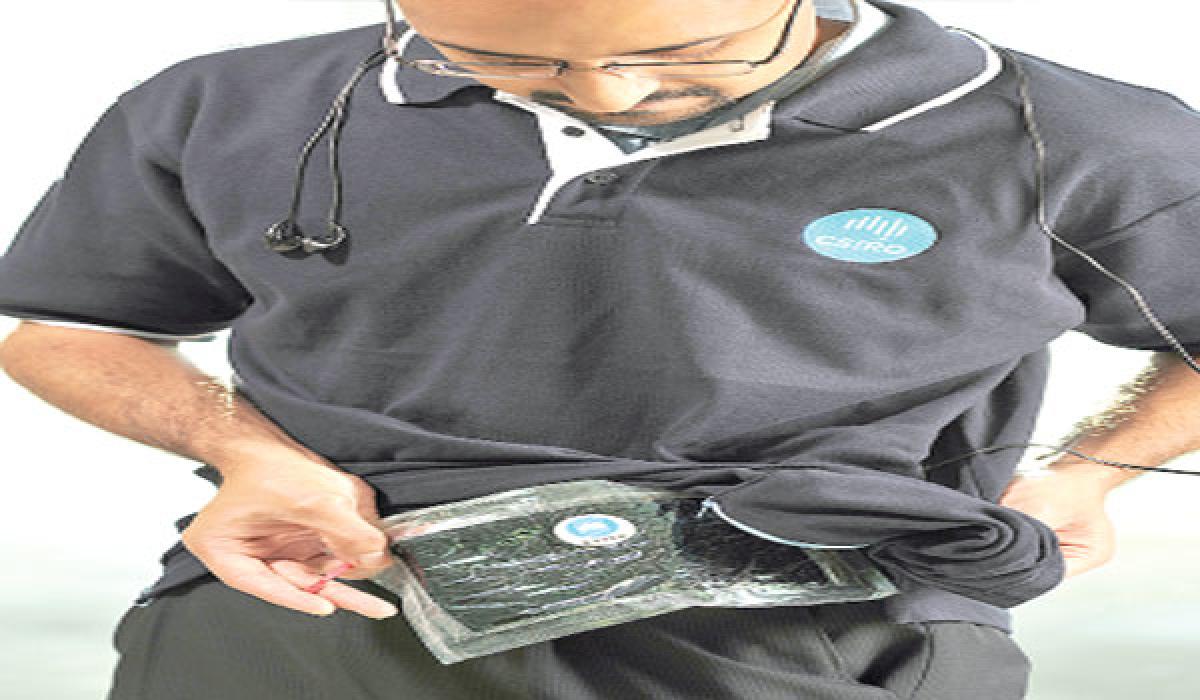Live
- Cong-AAP 'alliance' will not make any difference
- Don’t rely too much on PAs, Gutha cautions lawmakers
- Facial Recognition Tech leads to arrest of impostor
- Voter 'deletion' issue : Kejriwal-led AAP delegation meets EC
- KTR is daydreaming, flays Sridhar Babu
- Red roses given to BJP counterparts
- Dhankhar a govt spokesperson, biggest RS disruptor: Kharge
- Fire breaks out at petrol pump
- Facial recognition-based attendance in Sectt from today
- TGPSC to be restructured on par with UPSC
Just In

Researchers have invented a way to apply metal-free electrodes to fabric and off-the-shelf clothing so that it feels good to the touch and also transports enough electricity to power small electronics. Such clothes may one day power wearable electronic devices.
Washington : Researchers have invented a way to apply metal-free electrodes to fabric and off-the-shelf clothing so that it feels good to the touch and also transports enough electricity to power small electronics. Such clothes may one day power wearable electronic devices.
Powering advanced fabrics that can monitor health data remotely are important to the military and increasingly valued by the health care industry, said one of the researchers Trisha Andrew at the University of Massachusetts Amherst. Generating small electric currents through relative movement of layers is called triboelectric charging, Andrew explained.
Materials can become electrically charged as they create friction by moving against a different material, like rubbing a comb on a sweater. "By sandwiching layers of differently materials between two conducting electrodes, a few microwatts of power can be generated when we move," she added.
In the study published online in the journal Advanced Functional Materials, the researchers described the vapor deposition method they use to coat fabrics with a conducting polymer to make plain-woven, conducting fabrics that are resistant to stretching and wear and remain stable after washing and ironing. The thickest coating they put down is about 500 nanometres, or about 1/10 the diameter of a human hair.
The researchers tested electrical conductivity, fabric stability, chemical and mechanical stability of the technique on conductivity for 14 fabrics, including five cottons with different weaves, linen and silk from a craft store."Our article describes the materials science needed to make these robust conductors," Andrew said.
"We show them to be stable to washing, rubbing, human sweat and a lot of wear and tear," she said. The coating did not change the feel of any fabric as determined by touch with bare hands before and after coating.

© 2024 Hyderabad Media House Limited/The Hans India. All rights reserved. Powered by hocalwire.com







